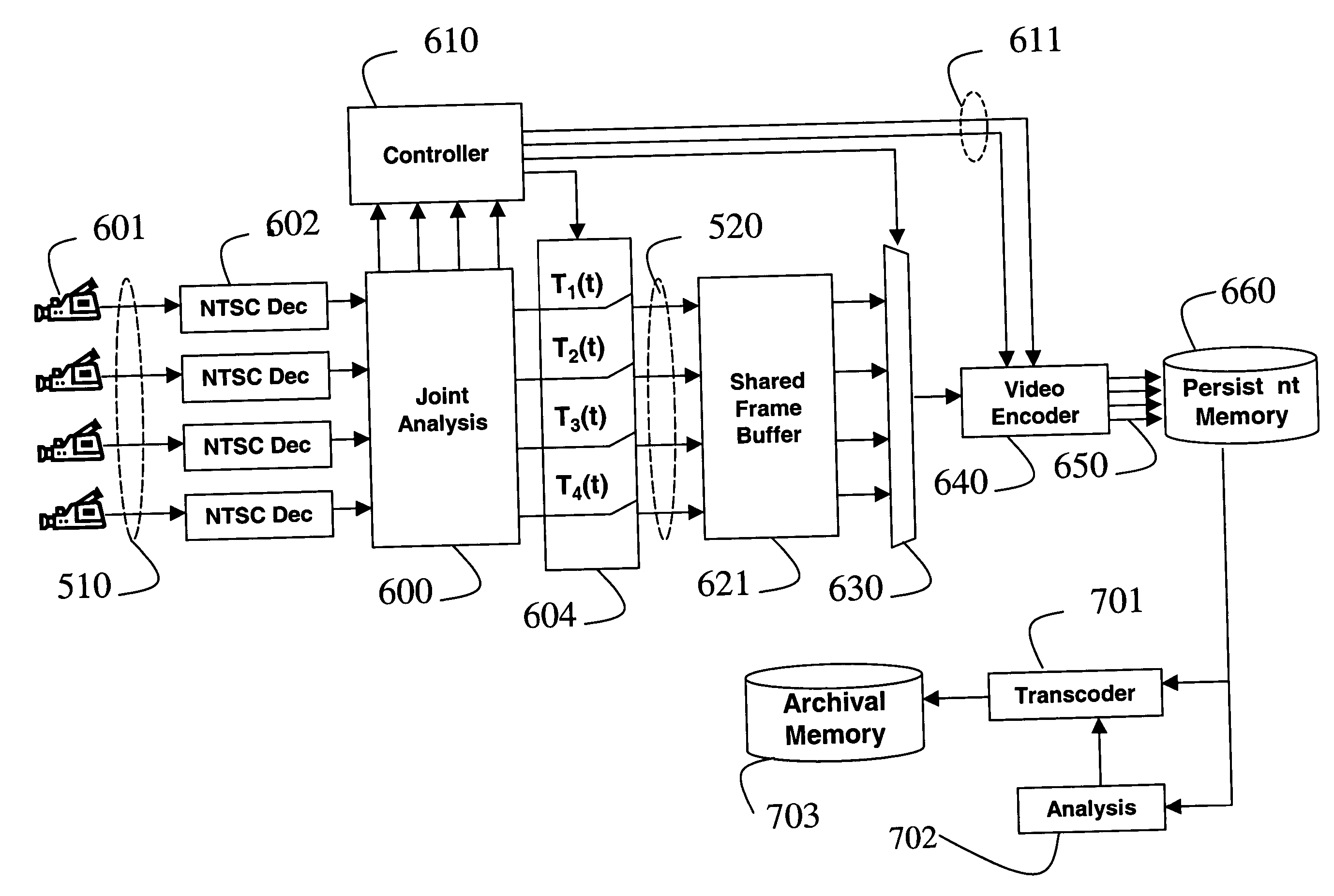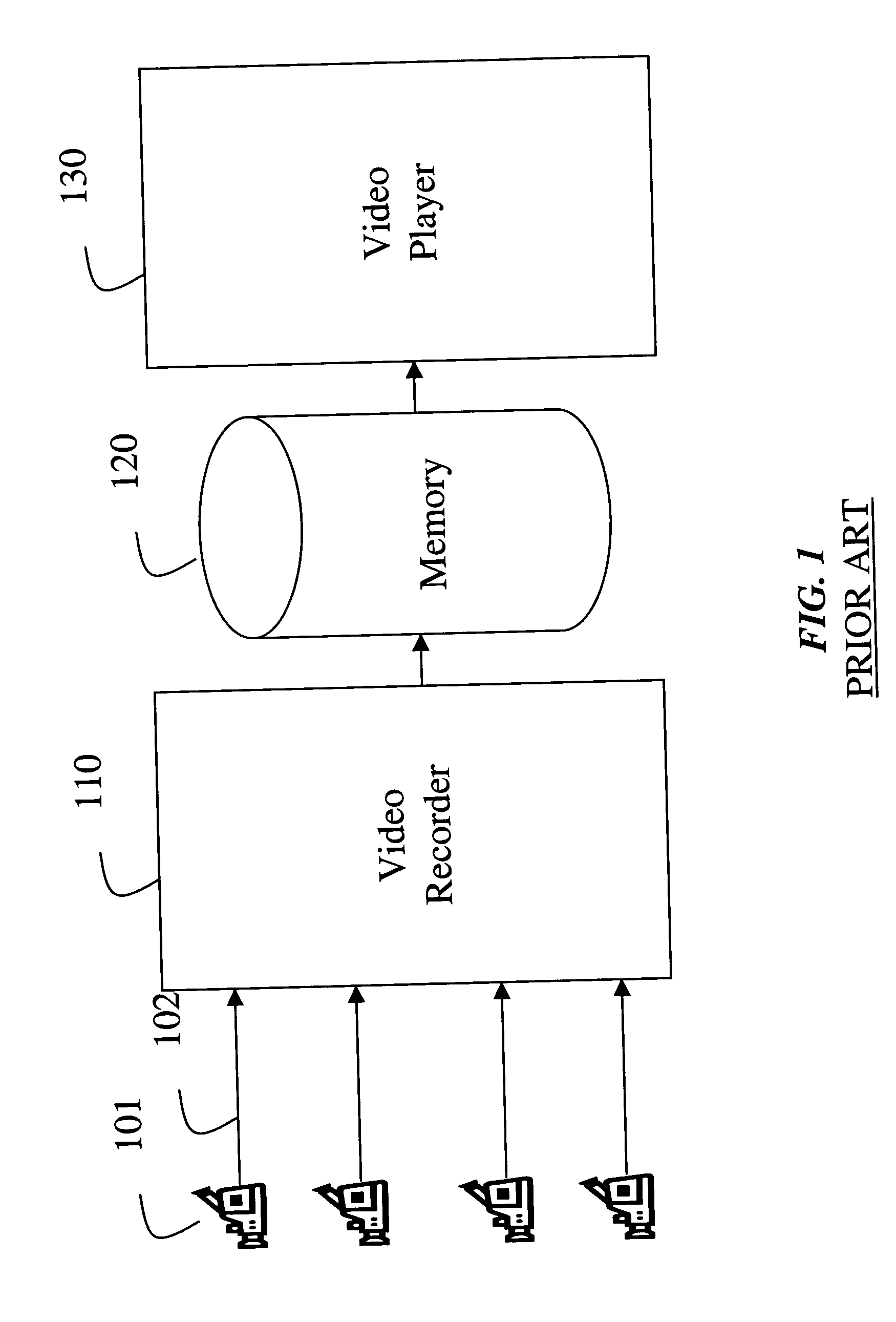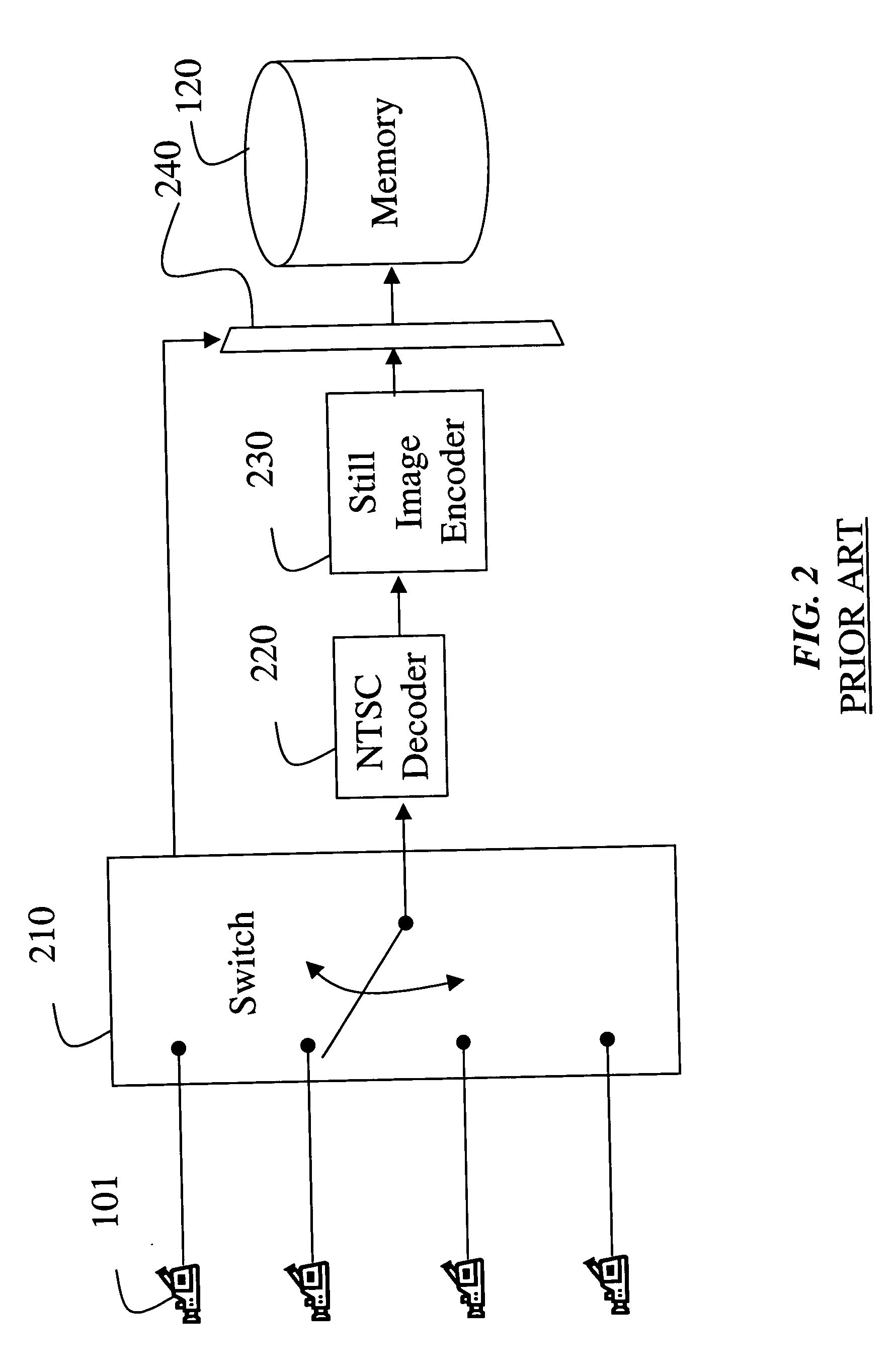Resource-constrained encoding of multiple videos
a technology resources, applied in the field of encoding multiple videos, can solve the problems of increasing the cost of the system, still images are encoded, and the video encoder b>320/b> is not fully utilized, etc., and achieves low cost, scalable and flexible, compression-efficient
- Summary
- Abstract
- Description
- Claims
- Application Information
AI Technical Summary
Benefits of technology
Problems solved by technology
Method used
Image
Examples
Embodiment Construction
FIG. 5 shows individual frames 501 of multiple input videos (videos 1-4) 510 acquired concurrently with a camera at fixed sampling rates. Subject to joint analysis 600 according to our invention, frames 502 of multiple output videos 520 have a variable and non-uniform temporal sampling rates. The objective of the joint analysis is to minimize a combined distortion for all output videos, while a combined frame rate constraint is satisfied.
Factors affecting the rate and presence of a particular output frame 502 at a given time include compression efficiency, resource constraints, and significant event detection. Compression efficiency can relate to the type encoder that is used, e.g., MPEG-2 or MPEG-4. Resource constraints consider memory, processing speed, and encoding rates. By significant events, we mean short-term local events that are different from longer portion of the underlying scene.
For example, in a surveillance video, a person entering an otherwise static scene of an em...
PUM
 Login to View More
Login to View More Abstract
Description
Claims
Application Information
 Login to View More
Login to View More - R&D
- Intellectual Property
- Life Sciences
- Materials
- Tech Scout
- Unparalleled Data Quality
- Higher Quality Content
- 60% Fewer Hallucinations
Browse by: Latest US Patents, China's latest patents, Technical Efficacy Thesaurus, Application Domain, Technology Topic, Popular Technical Reports.
© 2025 PatSnap. All rights reserved.Legal|Privacy policy|Modern Slavery Act Transparency Statement|Sitemap|About US| Contact US: help@patsnap.com



